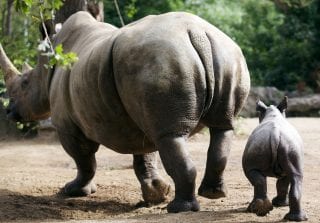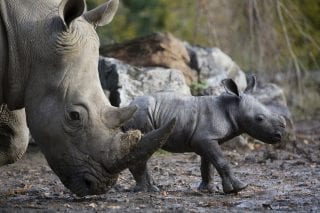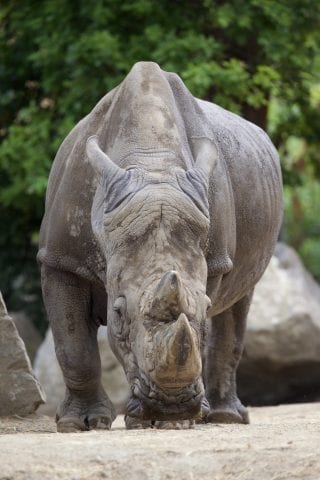Fun Facts
Not-so-white rhino
There is actually no colour difference between the black and white rhinos species, despite their names. They are both grey in colour.
Their name comes from the Afrikaans word “weit” which means wide, referring to the shape of their mouth.
Northern white rhinos
As of 2021, there are only two remaining individuals of the other subspecies of white rhino, the Northern white rhino. The two remaining Northern white rhinos are called Fatu and Najin and are both female. The last male rhino, Sudan, died in 2018. Scientists are involved in a complicated project to save the Northern white rhino subspecies. This involves fertilising Fatu’s eggs using frozen sperm from deceased male Northern rhinos and then transferring them to a surrogate Southern white rhino at a later date, in the hope that a new Northern white calf will eventually be born.
Long horn
The Southern white rhinoceros' front horns are is on average about 60 cm long, but can grow up to 1.5 metres. The rear horn is much shorter. Rhinos’ horns are composed of keratin (the same material as skin, nails and hair) and are used as weapons against predators and to display dominance when threatened by other rhinos.



